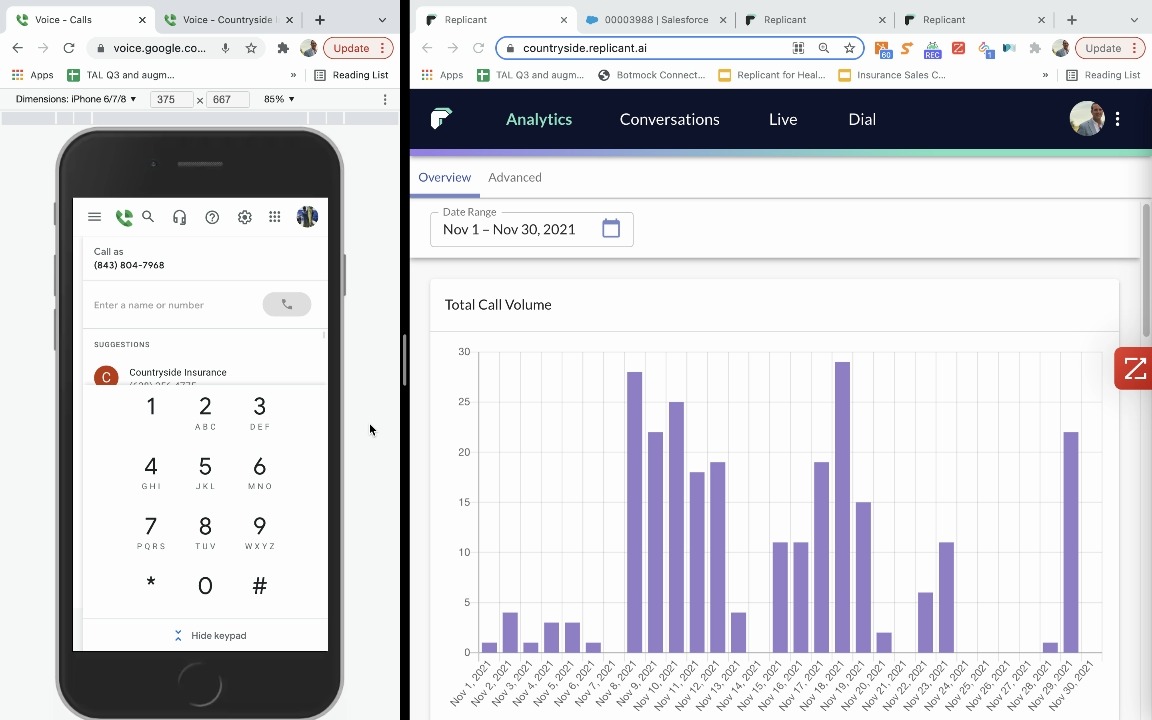Part of the worsening customer experience the retail industry faces today comes from a lack of adequate voice automation to streamline interaction with customer service calls. Wait times are skyrocketing, and it is much more difficult to reach a human agent than it was before the pandemic.
Traditional taped voice answering systems leave callers confused and annoyed. Inflexible navigational voice prompts park them on hold while waiting for a live customer service agent to get on the line. Even having an option to receive a callback when an agent is available does little to shorten the actual waiting time.
Typically, customers quickly get frustrated when dealing with corporate call centers.
Agent Retention Issues
To further exacerbate the problem, customer behavior is worse than ever. This contributes to call center workers succumbing to fatigue, frustration, and seeking other employment opportunities.
Retaining experienced agents and constantly hiring and training replacement call center workers is inefficient and costly. The repetitive cycle does little to improve the customer experience.
Now, automated artificial intelligence-powered voice systems can speak volumes to help save customer service jobs and improving the customer experience.
Replicant — a tech company providing voice automation solutions for call centers — is solving these staffing and customer experience problems with voice AI technology that can “speak” with customers to solve routine issues like rebooking flights, refunding orders, or providing status updates.
Voice automation can save customer service jobs by improving working conditions for call center employees, reducing burnout, and creating better experiences for customers, according to Replicant CEO Gadi Shamia. His platform has helped reduce wait times by 70%.
“It is not uncommon to hear people wait three or five hours [for a callback]. Wait times reflect a measure for acceptable customer service. Customers are unhappy because they want a quick answer. They do not usually get it,” he told CRM Buyer.
Agentless Contact, Push to Live Agent
Shamia does not market his technology as a pretend human replacement. Nor does Replicant give its tech a female nickname. Rather, it is called a “thinking machine.”
This video shows the brand view of Replicant’s call center platform in action. It demonstrates how a conversation sounds and looks from the contact center side. Note that calls are not monitored in real-time.

Replicant’s approach attempts to streamline the customer service industry without eliminating call center jobs. It takes on the most frequent common contact calls for customer service that tend to be more transactional in nature.
“We just automated completely without a need for an agent in most cases,” Shamia said.
The artificial intelligence-powered voice bots escalate customer calls to agents right away when the response exceeds the programmed responses. That way, an actual person deals more with the exception rather than the routine.
The call center agents’ jobs become much more interesting, and they become much more valuable to the organization.
Flexible Platform, Beyond Voice
The Thinking Machine platform, five years in the making, is proprietary and customizable. That resolves the typical voice prompt maze in call centers that offer a one-size-fits-all solution. The user company can choose a male or female voice and a variety of generic answers on behalf of the types of services or products it provides.
Callers are not subjected to a limited conversational menu. The conversation is no different than how any live agent would answer the call. The company using the platform controls the conversational flow and creates a script that projects the tone of the company’s policy and brand.
Once Replicant’s engineers finesse the best script for each situation, call center performance becomes consistent in providing the same level of service every time. Customers’ calls are answered almost immediately and incur virtually no wait times.
The platform is flexible and not limited to voice-only customer service. It’s a real-time communication channel solution that lets subscriber firms assemble voice, SMS, and chat options to handle customer service inquiries.
“We do not do email. That is less common in the U.S. Most of our customers are consumer companies,” Shamia explained.
Trained to (Near) Perfection
The Thinking Machine is not a typical voice platform. It is fine-tuned for an optimum caller experience for the subscribing user company.
Take, for example, a generic system like Salesforce, Shamia continued. There is a configuration for Salesforce or any of the common software platforms.
“We offer the platform that allows us to run this type of chat, but we also in a way help the customer create content, which is their unique conversation flow. The way we do that is by offering a library of reusable competence,” he offered.
Replicant calls these conversational flows “powers.” A power is an atomic unit that performs a very small function.
In many cases, the conversations with customers come from a central library of reusable components to innovate for new engagements. This process is something the company has never done before, he added.
Once Replicant creates a reusable component, it only needs to be slightly reconfigured among different customers and otherwise works out of the box.
Adds Missing Call Center Component
The Thinking Machine platform acts as an intermediary step between the caller and the customer service agents. Replicant monitors user feedback and regularly updates scripts and agent-connecting processes to smooth out wrinkles in the conversational flow.
The calling party telephones the company’s designated customer service number, which plugs into the Thinking Machine platform in Replicant’s cloud. That answered call is handled by the bot responses trained in the system.
The bot responses are natural sounding. When it is necessary to escalate the response to a live agent, the caller gets a near-instant call-forwarding transfer to a live agent with no holding or callbacks required.
One of the disconcerting stumbling blocks with voice bot conversations is their inability to always interpret what the caller means in using imprecise phrases or statements. Replicant’s bot training process pushes the limits so the bot can “understand” the caller’s intent and provide an appropriate, useful response.
“We work with customers from all walks of life. We understand what a caller said and the meaning. We have to be more understanding to carry out what action we have to take and reply under one second, said Shamia.
Fortifying the Task
Callers are not always clear, but the Thinking Machine needs to be perfect in figuring out what a caller says and means.
To solve that problem, Replicant had to build a lot of proprietary AI and machine learning components. That is a little harder for machines, Shamia admitted.
“So the machine understands the intent even though it heard something else. It deals with the human brain and puts it in context,” he said.
Replicant is very transparent about alerting callers to the customer experience. The opening greeting callers hear — in a very human-sounding voice — is that they are engaging a Thinking Machine.
Humanlike Characteristics
The use of AI and ML in the Replicant’s Thinking Machine is, in some ways, a little like having a live being that the company must maintain, suggested Shamia.
“It is a bit different than just sending software and being gone. Because also, the more data we collect, the smarter the system becomes,” he said. “So, there is a bit of a living organism here that we continue through iterations to improve the model to increase the accuracy.”
Compared to traditional call center agent replacement cycles, Replicant sees its machine responses as a more effective approach to helping subscribers save money.
If you have your own agents, you need to retrain them all the time. The average tenure in the customer service industry is less than one year. When after eight months, you have three new ones, training begins all over again.
“So we actually do significantly less training machines than you do for your agents,” he concluded.
























































